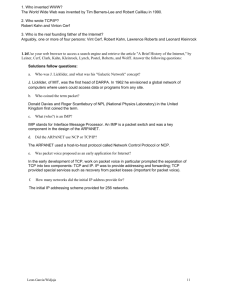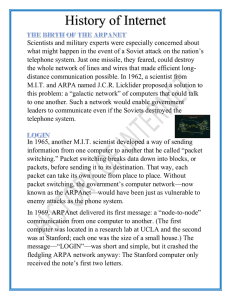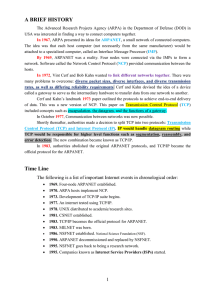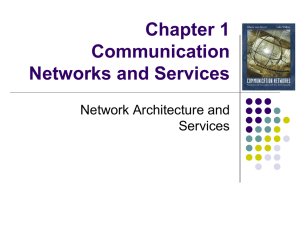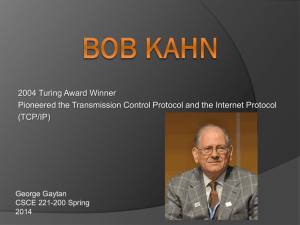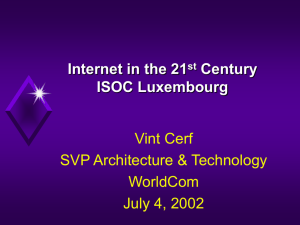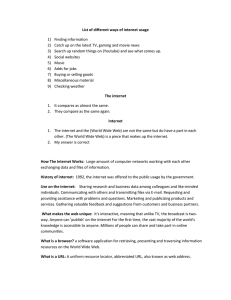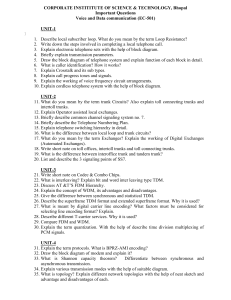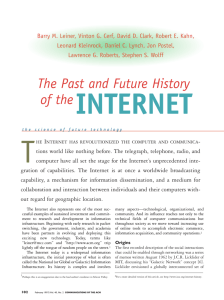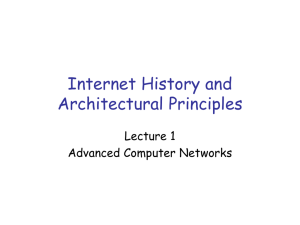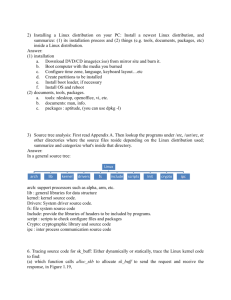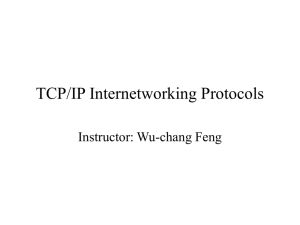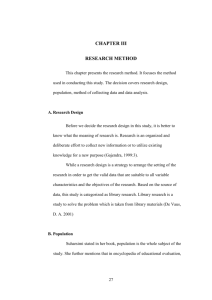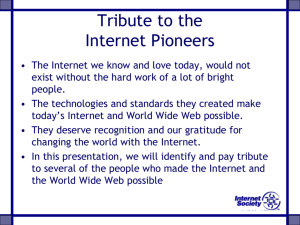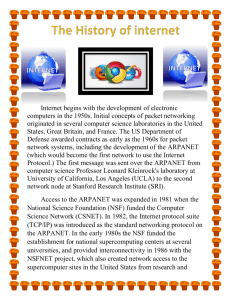History - Networking Research Group
advertisement
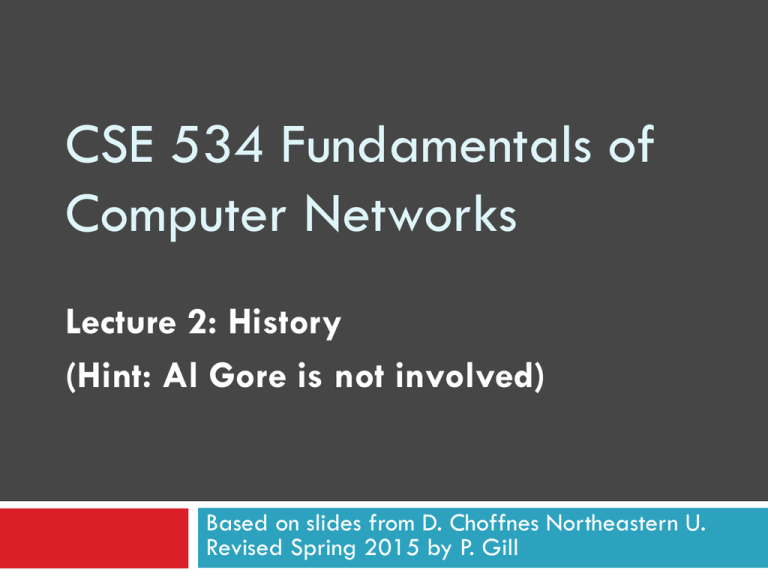
CSE 534 Fundamentals of Computer Networks Lecture 2: History (Hint: Al Gore is not involved) Based on slides from D. Choffnes Northeastern U. Revised Spring 2015 by P. Gill What is a Comm. Network? 2 A communications network is a network of links and nodes arranged so that messages may be passed from one part of the network to another What are Networks nodes and are links?key for: • Speed and roads Telephones and switches • Distance Computers and routers People What is a message? Information Networks are Old 4 2400 BC: courier networks in Egypt 550 BC: postal service invented in Persia Problems: • Speed • Reliability • Security Submarine Cables + The Telegraph 1850 – first submarine cables laid …by 1900 the first global communications network! Towards Electric Communication 6 1837: Telegraph invented by Samuel Morse Distance: 10 miles Speed: 10 words per minute In use until 1985! Higher compression = faster speeds Key challenge: how to encode information? Originally used unary encoding A• Next B •• C ••• D •••• E ••••• generation: binary encoding A •– B –••• C –•–• D –•• E• Telephony 7 1876 – Alexander Graham Bell invents the telephone Advantages Key challenge: how to scale the network? Originally, •Easy to useall phones were directly connected O(n2) complexity; n*(n–1)/2 • Switching mitigates complexity 1878: Switching •Makes cablelines management 1937: Trunk + multiplexingtractable Problems • Manual switching • 1918: cross country call took 15 minutes to set up Growth of the Telephone Network 8 1881: Twisted pair for local loops 1885: AT&T formed 1892: Automatic telephone switches 1903: 3 million telephones in the US 1915: First transcontinental cable 1927: First transatlantic cable 1937: first round-the-world call 1946: National numbering plan Crazy idea: Packet switching 9 Telephone networks are circuit switched Each call reserves resources end-to-end Provides excellent quality of service Problems Resource intense (what if the circuit is idle?) Complex network components (per circuit state, security) Packet switching No connection state, network is store-and-forward Minimal network assumptions Statistical multiplexing gives high overall utilization The World’s Most Successful Computer Science Research Project 10 History of the Internet 11 1961: Kleinrock @ MIT: packet-switched network 1962: Licklider’s vision of Galactic Network 1965: Roberts connects computers over phone line 1967: Roberts publishes vision of ARPANET 1969: BBN installs first InterfaceMsgProcessor at UCLA 1970: Network Control Program (NCP) 1972: Public demonstration of ARPANET 1972: Kahn @ DARPA advocates Open Architecture 1972: Vint Cerf @ Stanford writes TCP The 1960s 13 1971 14 1973 15 Satellite Link to Hawaii First international connections (London + Norway) Growing Pains 16 Problem: early networks used incompatible protocols Kahn’s Ground Rules 17 1. Each network is independent, cannot be forced to change 2. 3. Best-effort communication (i.e. no guarantees) Boxes (routers/gateways) connect networks 4. A network of networks Each running their own set of protocols Boxes that do not maintain state keep them simple! No global control Principles behind the development of IP Led to the Internet as we know it Internet is still structured as independent networks The Birth of Routing 18 Trivia • Kahn believed that there would only be ~20 networks. • He was way off. • Why? 2000 19 2006 20 2009 21 More Internet History 22 1974: Cerf and Kahn paper on TCP (IP kept separate) 1980: TCP/IP adopted as defense standard 1983: ARPANET and MILNET split 1983: Global NCP to TCP/IP flag day 198x: Internet melts down due to congestion What is next? 1986: Van Jacobson saves the Internet (BSD TCP) 1987: NSFNET merges with other networks 1988: Deering and Cheriton propose multicast 1994: NSF backbone dismantled, private backbone 1999-present: The Internet boom and bust … and boom 2007: Release of iPhone, rise of Mobile Internet Internet Applications Over Time 23 1972: Email 1973: Telnet – remote access to computing 1982: DNS – “phonebook” of the Internet 1985: FTP – remote file access 1989: NFS – remote file systems 1991: The World Wide Web (WWW) goes public 1995: SSH – secure remote shell access 1995-1997: Instant messaging (ICQ, AIM) 1998: Google 1999: Napster, birth of P2P 2001: Bittorrent What is next? 2004: Facebook 2005: YouTube 2007: The iPhone Takeaways 24 Communication is fundamental to human nature Key concepts have existed for a long time Speed/bandwidth Encoding Latency Cable Switching Packets vs. circuits management Multiplexing Routing The Internet has changed the world Promise of free ($) and free (freedom) communication Shrunk the world What made the Internet so successful? Stay tuned!
